All products featured are independently chosen by us. However, SoundGuys may receive a commission on orders placed through its retail links. See our ethics statement.
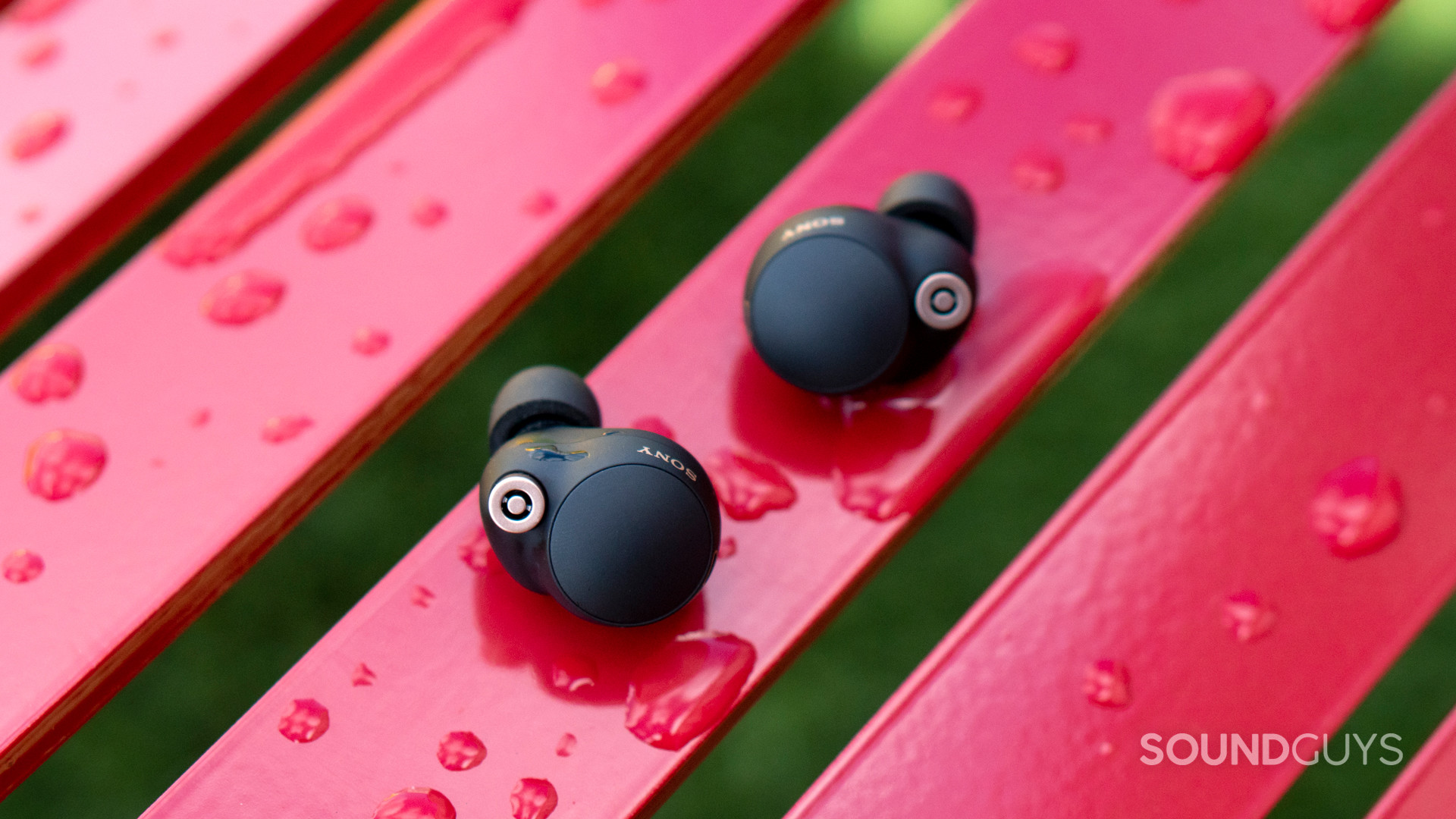

Sony WF-1000XM4 review
April 9, 2024


Sony WF-1000XM4
The world of true wireless earphones is tough to navigate, especially with the extreme popularity of Apple’s AirPods and AirPods Pro. There are so many options out there claiming to be “AirPods killers.” It can be tough to know one when you see one. Well, if ever an “AirPods killer” existed, the Sony WF-1000XM4 was a strong contender.
We spent a week with the Sony WF-1000XM4 and continue to use it intermittently as we compare it to other products. Let’s explore what makes it one of the best sets of wireless earbuds you can buy, even still in 2024.
What's new?
- Song has now released the never WF-1000XM5 earbuds, meaning the older models are more frequently on sale. You can read how they compare to the WF-1000XM4 earbud in our versus article.
- This review was updated on April 9, 2024, to ensure the timeliness of the information within.
Deep-pocketed true wireless enthusiasts will find a trusty companion in these earphones. Gym rats will also appreciate these glamorous buds for their IPX4 water resistance. Of course, those who generally like to keep up with the bleeding edge of audio tech are going to need to look at the WF-1000XM4. Sony’s feature-packed buds offer a lot, and all features work on any OS.
What’s it like to use the Sony WF-1000XM4?
The Sony WF-1000XM4 is one of the best wireless earphones on the market, and the experience is as top-notch as it gets in this category. Noise attenuation, sound quality, and user experience are all top-notch, as Sony has taken a keen interest in improving the things that could potentially make users’ lives better.
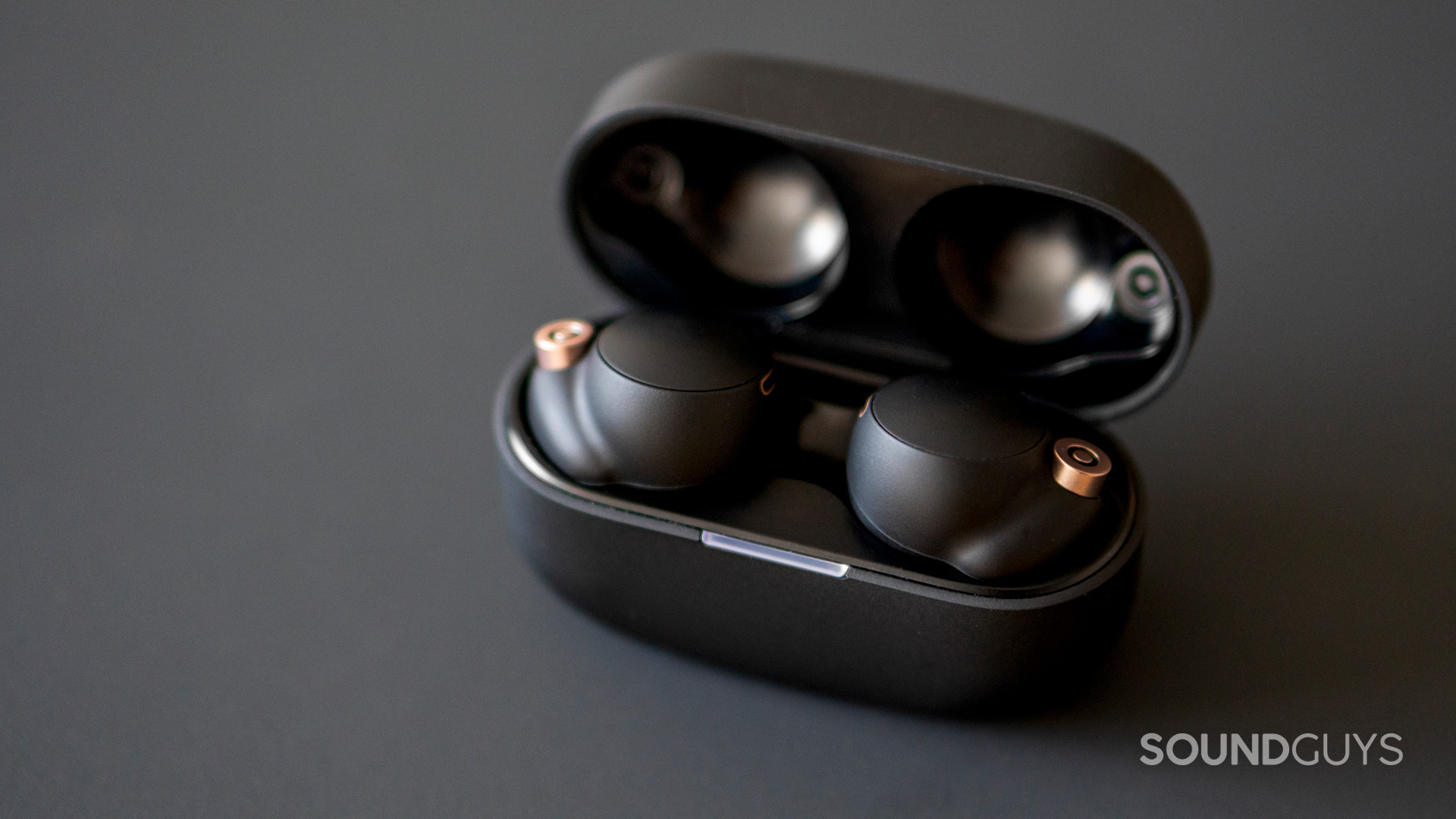
Included in the recycled paper packaging of the Sony WF-1000XM4 are the charging case, three sizes of polyurethane foam ear tips, your earphones, and a charging cable. Assorted documentation will help guide you, as these are a smart product like any other, and there’s a fair bit to go over to link your voice assistant and other integrations. Truth be told, the setup process is fairly simple, though you’ll want the Headphones Connect app from Sony to get the most out of your earphones. The app has all sorts of goodies baked in, like changing your control scheme, updating your virtual assistant, changing the sound of your earphones, and more.
Using the Sony WF-1000XM4 is pretty rewarding, given that the earbuds are much smaller than their predecessors and consequently fit a lot better. Capacitive touch controls mean you won’t struggle to command your earbuds, and sweat resistance means you probably won’t kill these when you work out.
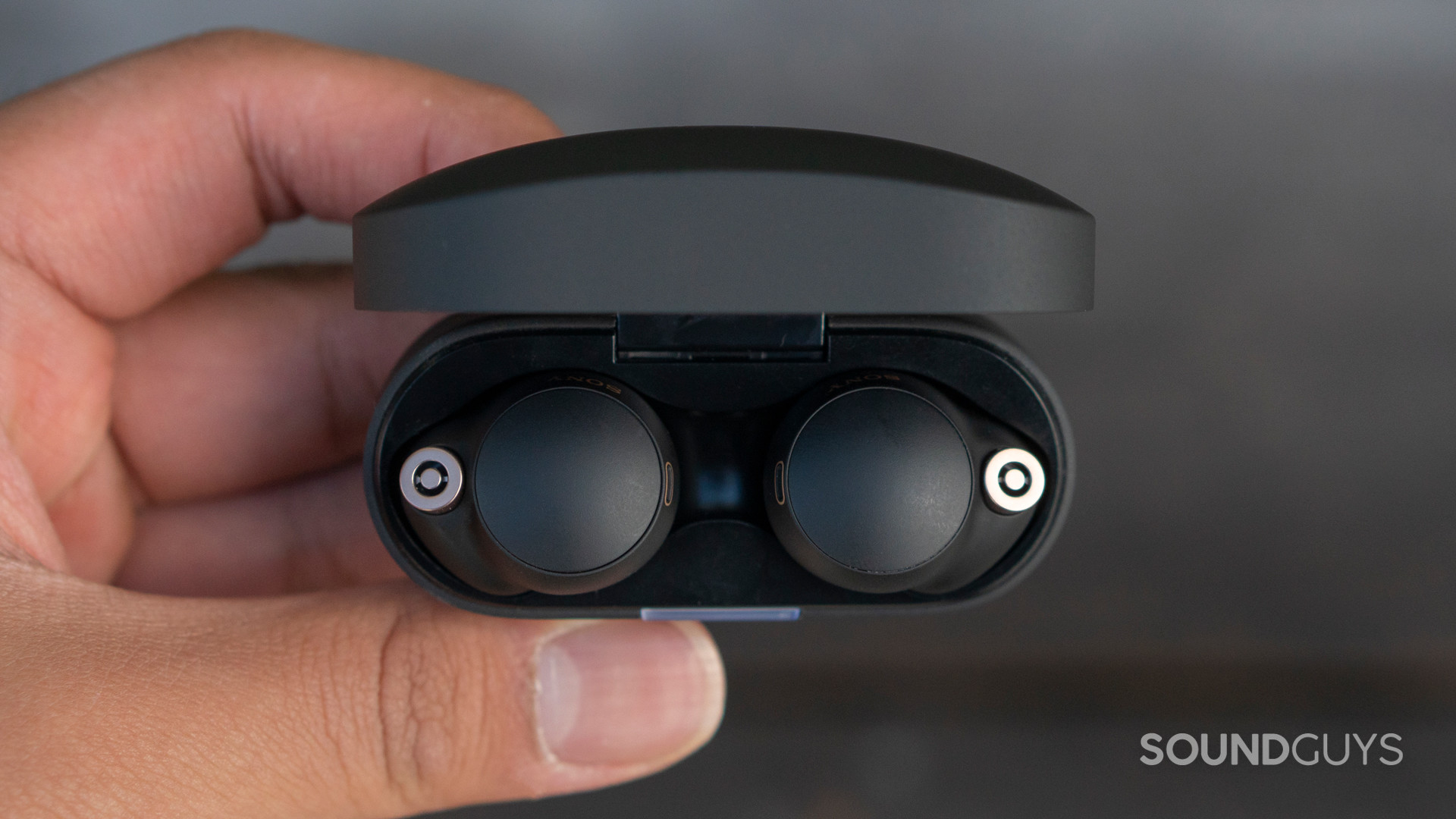
Under the hood, Sony’s V1 processor helps the Sony WF-1000XM4 use less energy for its main functions, so noise canceling and Hi-Res playback won’t tank your battery life as much as in the past. The case is upgraded too, now able to charge wirelessly via Qi-compatible pads. Additionally, it’s also much smaller than the Sony WF-1000XM3‘s case. If you don’t have a wireless charging pad, you can hook the case up to just about any old USB-C charging apparatus.
How to wear the Sony WF-1000XM4
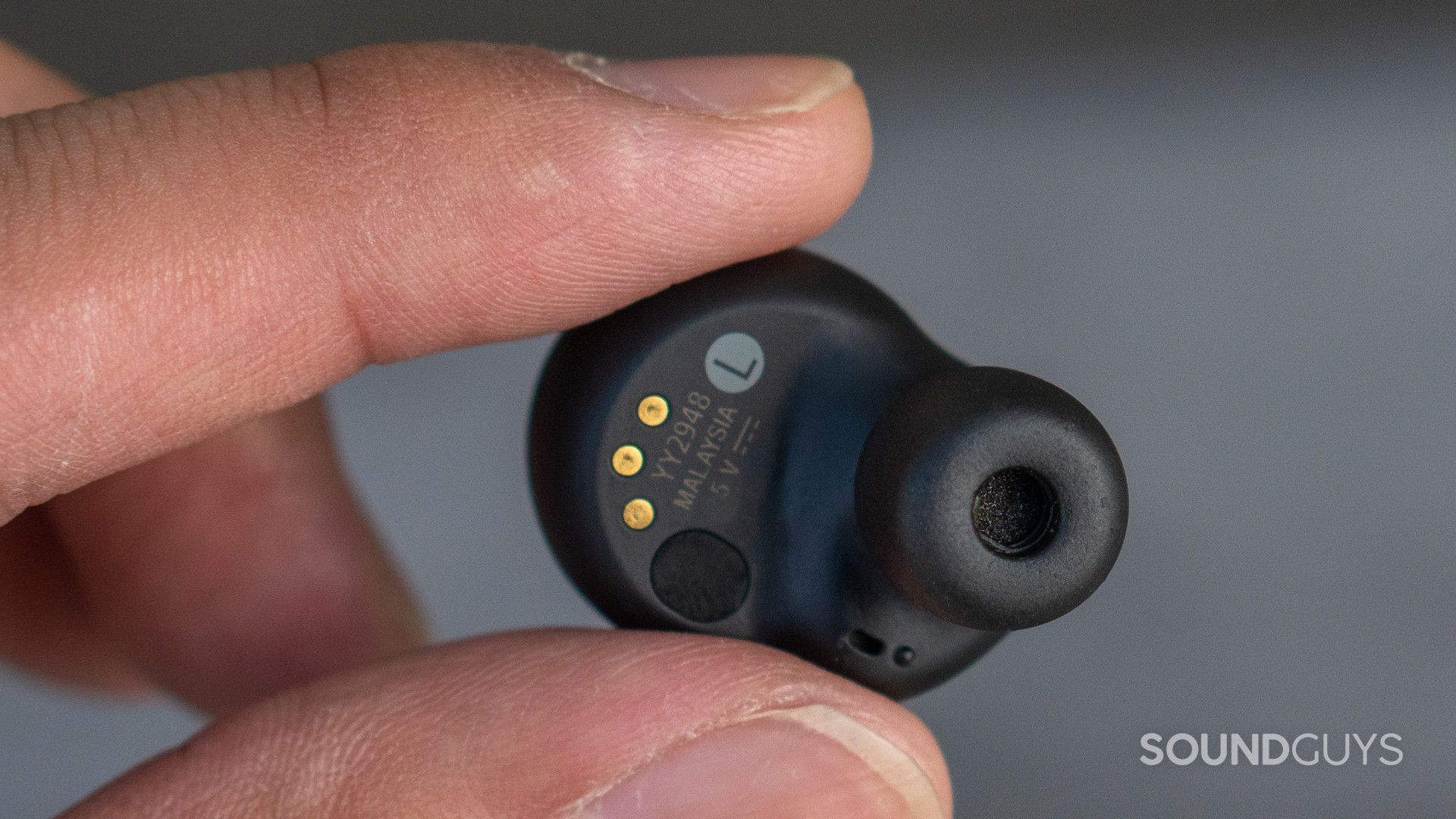
To get the best fit with the included foam tips, you’re going to have to fight the urge to just jam them in your ears. Take the time to roll the foam in your fingers first (until they halve in thickness), so that they’re easier to slip into your ears. Once inside, hold the earphones in place for about 20 seconds while the foam expands back outward to press against your ear canals. After this happens, you should have a near-ideal fit that you can check with the Headphones Connect app’s fit test. if you need larger or smaller ear tips, the app will tell you!
Open Headphones Connect, and connect to your earbuds in the app. The next screen will offer you several options to better use your earphones, and you can then navigate to the ear tip fit test from the “System” tab. The test will guide you through proper fit and a test sweep to verify that the function is working properly, and then you’re good to go.
The Sony WF-1000XM4 is not waterproof, but it does have an IPX4 rating against moisture. That means these earphones will be quite at home in the gym — not the pool — if you decide to use them there. A word of caution, though: do the fit test before cardio because you don’t want an insecure fit when you’re about to really go hard.
How do you control the Sony WF-1000XM4?
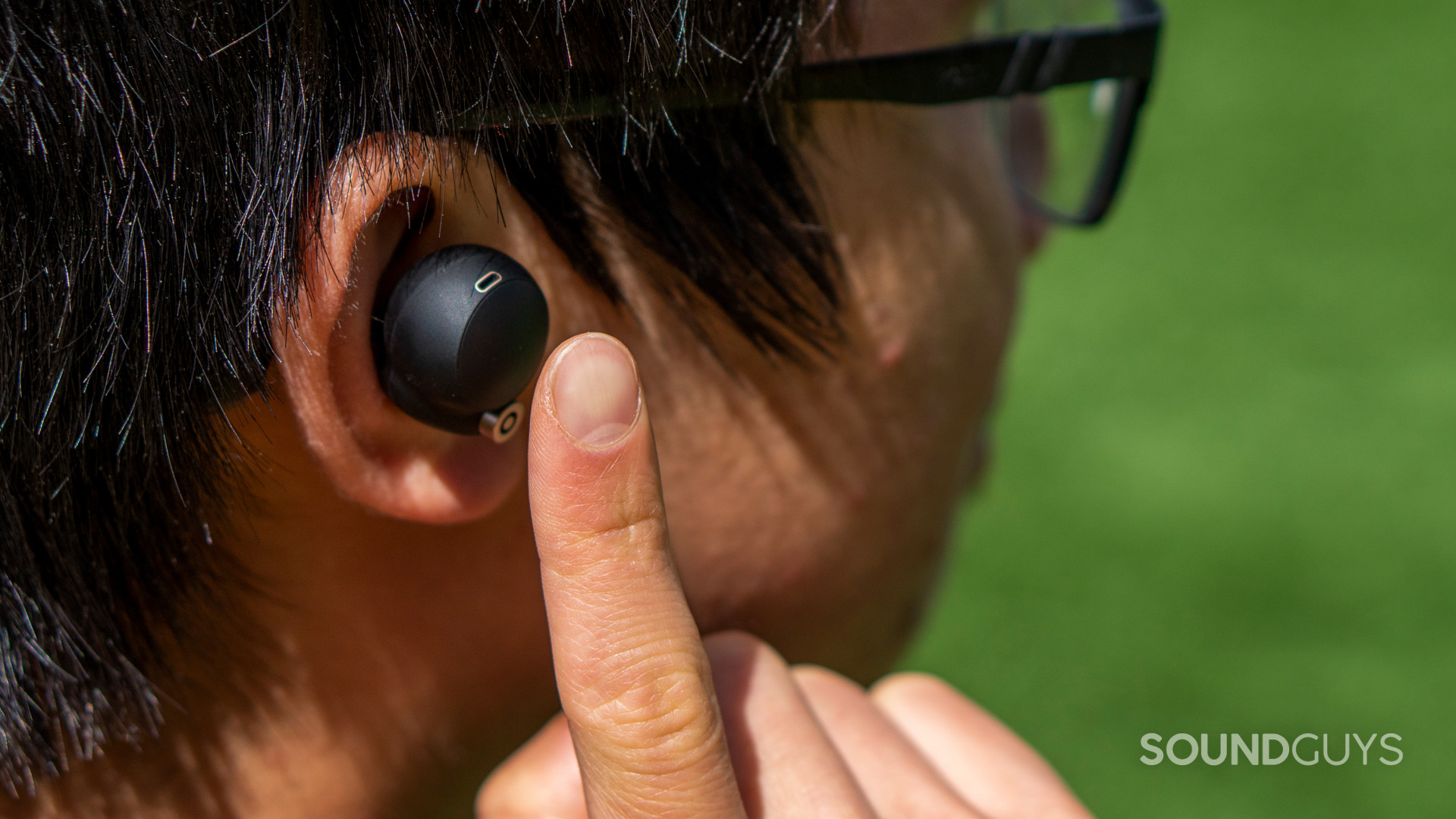
After you pop in the earphones of the Sony WF-1000XM4, there are a number of touch controls that allow you to keep that phone in your pocket. You can find a brief rundown below.
| INPUT | ACTION (left bud) | ACTION (right bud) |
|---|---|---|
| INPUT ONE TAP | ACTION (left bud) Mute/ANC/Ambient sound | ACTION (right bud) Play/Pause |
| INPUT TWO TAPS | ACTION (left bud) N/A | ACTION (right bud) Track forward/answer call |
| INPUT THREE TAPS | ACTION (left bud) N/A | ACTION (right bud) Track backward |
| INPUT TAP AND HOLD | ACTION (left bud) N/A | ACTION (right bud) Smart assistant |
Taking an earbud out of your ear will automatically pause your music. Additionally, you can hold a finger to your earbud to activate Sony’s passthrough feature.
How does the Sony WF-1000XM4 connect to your phone?
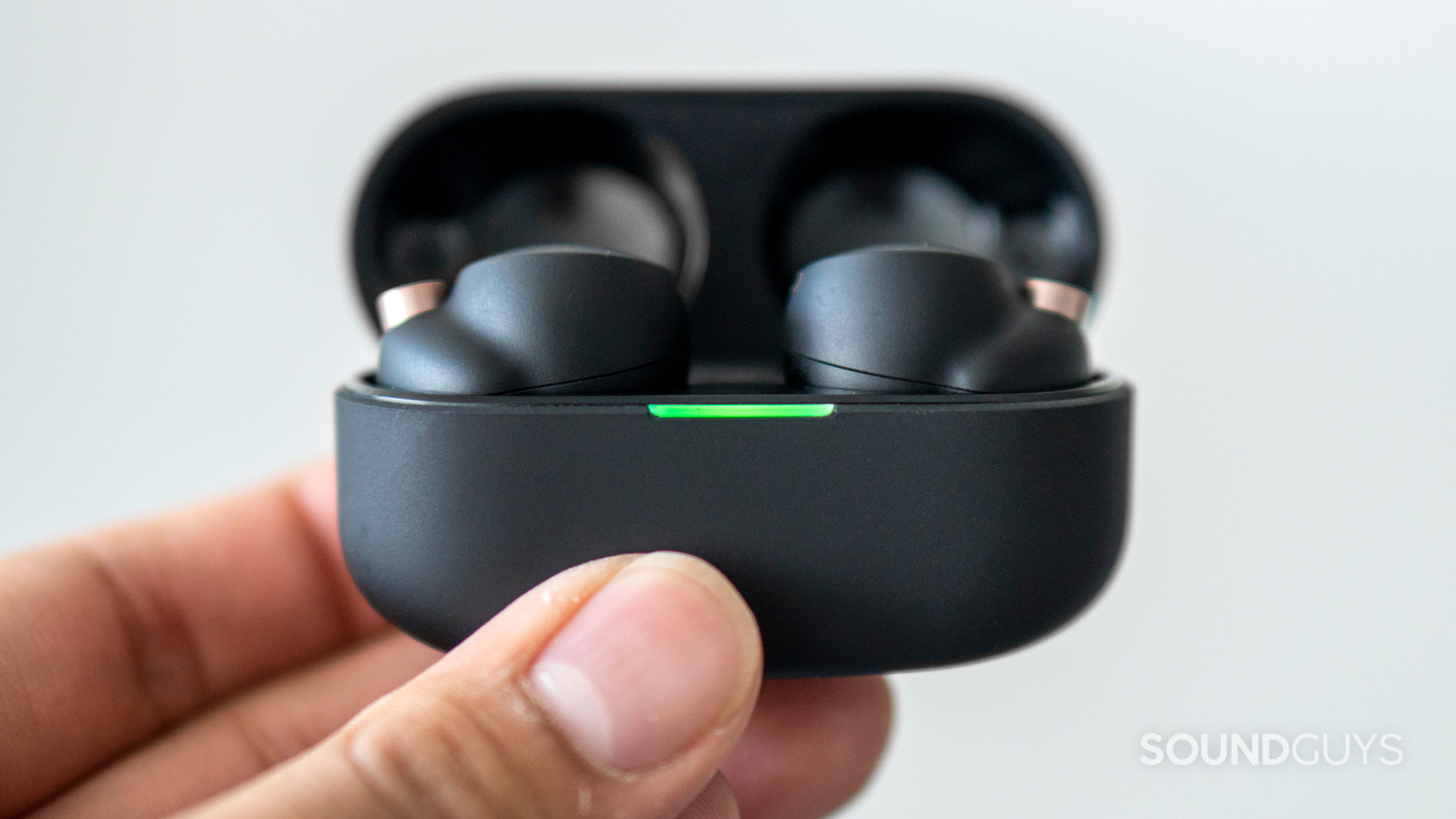
Unlike most earphones, the Sony WF-1000XM4 can connect to your phone using Bluetooth 5.2, which may sound a little boring — I assure you, it’s not. If you have a smartphone with a processor that supports this version of Bluetooth, you should see improved battery life. They also support all mandatory codecs in the 5.2 stack, including LE audio.
Like the Sony WH-1000XM4, the Sony WF-1000XM4 can use the SBC, AAC, and LDAC codecs. If you want the high-bitrate flavor of LDAC, you will have to enable developer options in your settings panel on Android. Scroll down to “Bluetooth Audio LDAC codec Selection: Playback quality” and pick from the list there. We believe your best results will be had with 660kbps, but your results may vary.
Without a pairing button on the case, pairing the Sony WF-1000XM4 can be a little tough to figure out on your own, but the process is pretty simple. You only need to set this up the first time you pair to a device, so don’t worry.
Remove the buds from the case and put them in your ears. Hold your fingers to both buds for 6 seconds, and the pairing mode will start — you’ll hear a synthetic voice tell you that your Sony WF-1000XM4 is in Bluetooth pairing mode. Ensure that your source is looking for a device to connect to, and you can select the Sony WF-1000XM4 from a list of available devices.
Every time you need to pair your buds afterward, you can just take them out of the case, and they’ll try to connect to a device they’ve connected to before. For most, that’ll just be your smartphone.
Is the Sony WF-1000XM4 better for the environment?
As much as I’d like to tell you that the Sony WF-1000XM4’s recycled paper packaging and reduced plastic is a game-changer for the environment, it’s a small gesture. The fact remains that all wireless earphones are ecological nightmares, no matter how eco-conscious the packaging is. Tiny batteries that lose their utility in a short period of time because of the charge cycles are still a big problem here, and I doubt we’ll see any TWS products really solve this any time soon.
...let's not kid ourselves: all wireless earphones are bad for the environment, and it's because their design is inherently flawed as a category.
To its credit, the V1 processor that the Sony WF-1000XM4 uses appears to do a great job at getting more performance out of the earphones with less power, and that’s a welcome thing for anyone using wireless earphones. The longer you can go without charging them, the longer the batteries in each earbud will last — and the longer the batteries last, the fewer times you’ll be tempted to throw out your earphones for a new model, reducing overall waste.
How good is the battery life of the Sony WF-1000XM4?
If you’re worried about battery, don’t be. The Sony WF-1000XM4 can last about 7 hours and 43 minutes per charge, and the case can charge the buds at least two more times for a total of a hair under 24 hours. You’ll likely only have to charge your case on weekends, even if you’re a regular commuter. Sure, it isn’t the best battery life we’ve ever recorded for true wireless earphones, but there’s a lot going on under the hood here.
How good is the Sony WF-1000XM4 at canceling noise?
Loading chart ...
The Sony WF-1000XM4 does an excellent job of quieting the world around you. Not only are these earbuds great with active noise cancellation (ANC), but the memory foam tips seal to oddly shaped ear canals extremely well, meaning they offer quite a bit of isolation, too. Good isolation also grants you a better chance at blocking out incidental noise like coworkers chattering and the gabble of a subway platform or city street.
Before the ANC unit of the Sony WF-1000XM4 can even try to cancel noise in your ear canal, the foam tips will have blocked at least some of the sound reaching your eardrum. That’s pretty good — it means street noise will sound about half to one-quarter as loud as it would with poor or no isolation.
To get the most out of the WF-1000XM4, you'll want to download the Headphones Connect app.
When you turn the ANC on, droning sounds from 50Hz and higher will sound roughly one-quarter to one-sixteenth as loud as they would without anything in your ears. That’s seriously impressive, and while it’s not the best ANC performance we’ve ever seen, it’s among the greats. Good isolation is the best way to protect your hearing and prevent noise from damaging your music’s perceived quality, so the result above is an uncommonly good one.
If the idea of not being able to hear the world around you freaks you out, you can toggle the ANC function of the earphones to allow some sound through. Tapping the left earbud will cycle through these modes: do so, and keep tapping until you hear “ambient sound” spoken in your ear. Once there, you should notice environmental sounds a lot better. Additionally, the Sony WF-1000XM4 comes with a “speak to chat” feature that will automatically enable audio passthrough if you start speaking with someone so you can chat with them. It’s a nice quality-of-life feature that allows you to keep your earbuds in for a quick conversation, which should be useful for in-flight service or brief interactions in the world once that starts opening up more.
How does the Sony WF-1000XM4 sound?
The Sony WF-1000XM4 sounds right about what it should for its price point, though there are some quirks that you might need to tinker a bit with to get the sound you want. In general, the foam ear tips guaranteeing a good seal means that not only are you able to prevent a lot of outside noise from affecting your tunes, but it’s easier to get the best performance possible.
Loading chart ...
If you decide to keep the default equalization (or don’t want to install the app), your music will sound pretty much like it’s supposed to, minus the fact that there’s a bit of an aggressive bass bump relative to the rest of your music. This is a very consumer-oriented sound, and it shows with the low-end emphasis. That’s not a bad thing, though, and it’s often something in-ear manufacturers do when they expect their product will need to drown out low-end noise from people wearing their buds in noisy situations.
In general, we found that the Sony WF-1000XM4 gives most notes up to middle-C a good bump while cutting the higher notes and harmonics after 2kHz a bit. What does that mean for you? Mostly, just that you should try fiddling with lowering the bass and mids in the equalizer of the Headphones Connect app a bit. If you leave your earphones un-tinkered-with, you might find that you lose a few details, and things like guitar attacks or super high notes sound about half as loud as they should. Of course, you can change that by equalizing, so it’s not as big of a deal as it sounds. It’s also possible your head will be a bit different than ours, so we publish our data so you can make an informed comparison to other models.
Loading chart ...
This kind of sound is really good for older recordings that tend to under-emphasize bass and vocal-heavy mixes. However, you may note that higher-pitched voices sound a tiny bit off, like in Fleetwood Mac’s Dreams. In this track, Stevie Nicks’ voice sounds a little “hollow” compared to what it might sound like over a stereo system. Some of the hi-hats are almost muted, and cymbal crashes sound a bit quiet.
Speaking of older music, the Sony WF-1000XM4 also brings the latest version of Sony’s digital sound enhancement engine (DSEE) to market, called DSEE Extreme. While upsampling music generally doesn’t have the Earth-shattering results promised by manufacturers, this feature is good to have in your back pocket if you listen to a lot of lossy files on your phone. Otherwise, you’ll not notice much of a benefit with higher-bitrate tracks because it doesn’t need to upsample those files.
Hoping to take advantage of spatial audio in music? The Sony WF-1000XM4 supports Sony’s proprietary 360 Reality Audio, which is supported on the Tidal, Deezer, and Amazon Music HD streaming services.
You can watch our Sony 360 Reality Audio breakdown video here.
Is the Sony WF-1000XM4 microphone any good?
The Sony WF-1000XM4 has a decent mic, but it suffers a little bit over AAC. It’s perfectly fine for phone calls, though. There’s also a feature that will detect when you speak to help the mic determine what sounds you want it to boost and what’s just noise. It’s a useful feature, albeit one you may not notice as much. But that’s really the point: Sony doesn’t want you to think about this sort of thing. It just wants your audio to be decent.
When there’s background noise, such as wind or the office sounds in the second sample below, then the microphones really struggle to transmit voices clearly.
Sony WF-1000XM4 microphone demo (Ideal):
Sony WF-1000XM4 microphone demo (Office):
Sony WF-1000XM4 microphone demo (Wind):
How does the microphone sound to you?
Should you buy the Sony WF-1000XM4?
Now that the Sony WF-1000XM5 has superseded the Sony WF-1000XM4, you can often snag these earbuds for less than $200 on sale, sometimes even as low as $130 at the time of updating this article. We wouldn’t recommend paying the original price tag of $278 in 2024.
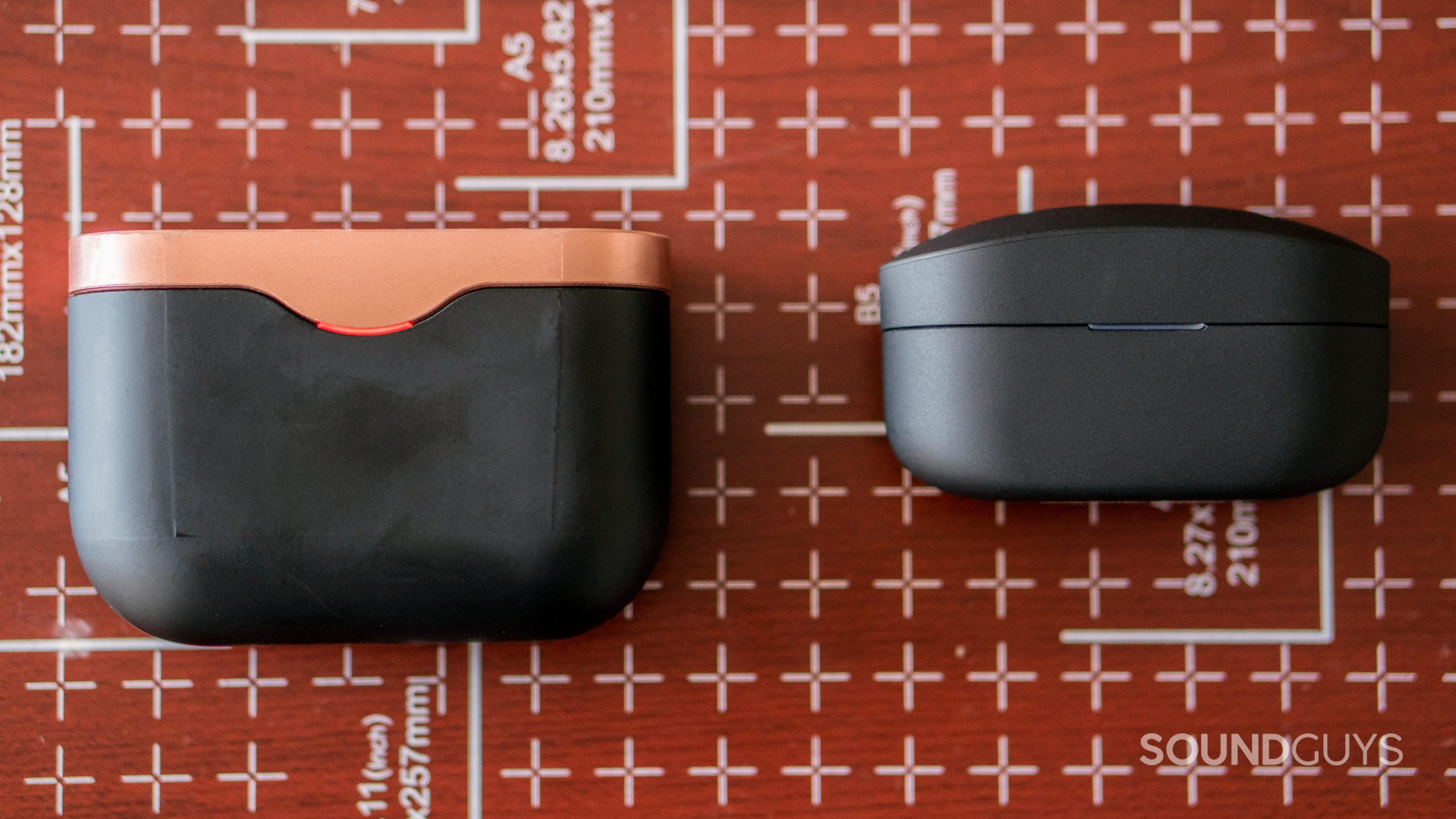
If you have the money, the Sony WF-1000XM4 is a decent buy for the right person, but these are older earphones at this point. Despite the fact that $279 is a lot of money to part with over a product like wireless earphones, a sale price could close the deal for you if it’s closer to $200 to compete with other older models.


How does the Sony WF-1000XM4 compare to the Sony LinkBuds S noise canceling earbuds?
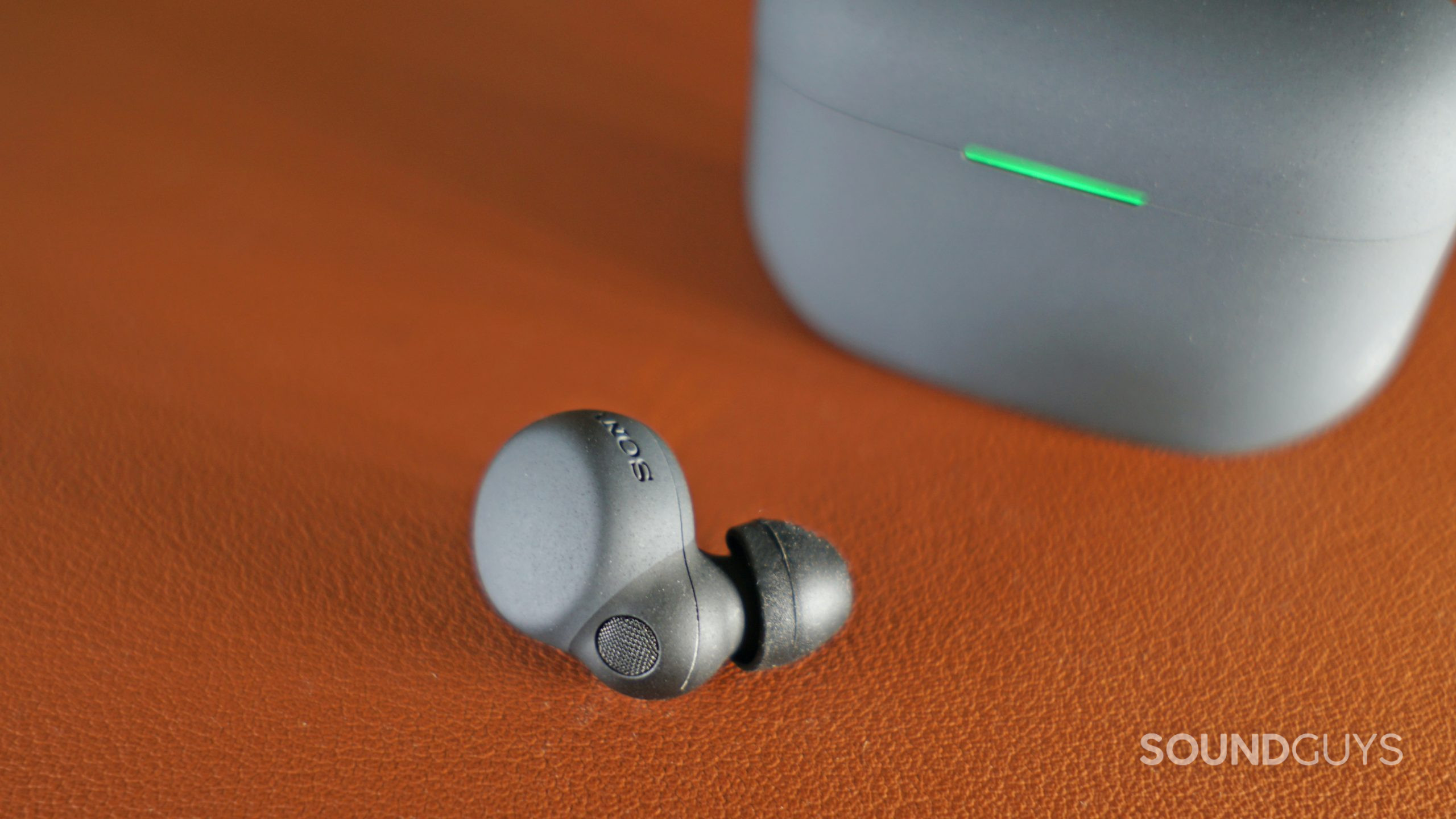
The Sony LinkBuds S features ANC and a closed design like the WF-1000XM4 earbuds, but the LinkBuds S costs $80 less. The tradeoff is that the LinkBuds S has an anonymous design that lacks pizzaz, and its housings and case pick up dirt and fuzz, meaning you have to clean everything more often. You get many of the same software features on the LinkBuds S as you do on the WF-1000XM4, including 360 Reality Audio optimization and speak-to-chat functionality. Battery life is a bit shorter with the LinkBuds S and lasts 5 hours and 41 minutes, according to our tests, but you can use the case to fast charge the earbuds. Five minutes of charging provides 60 minutes of listening.
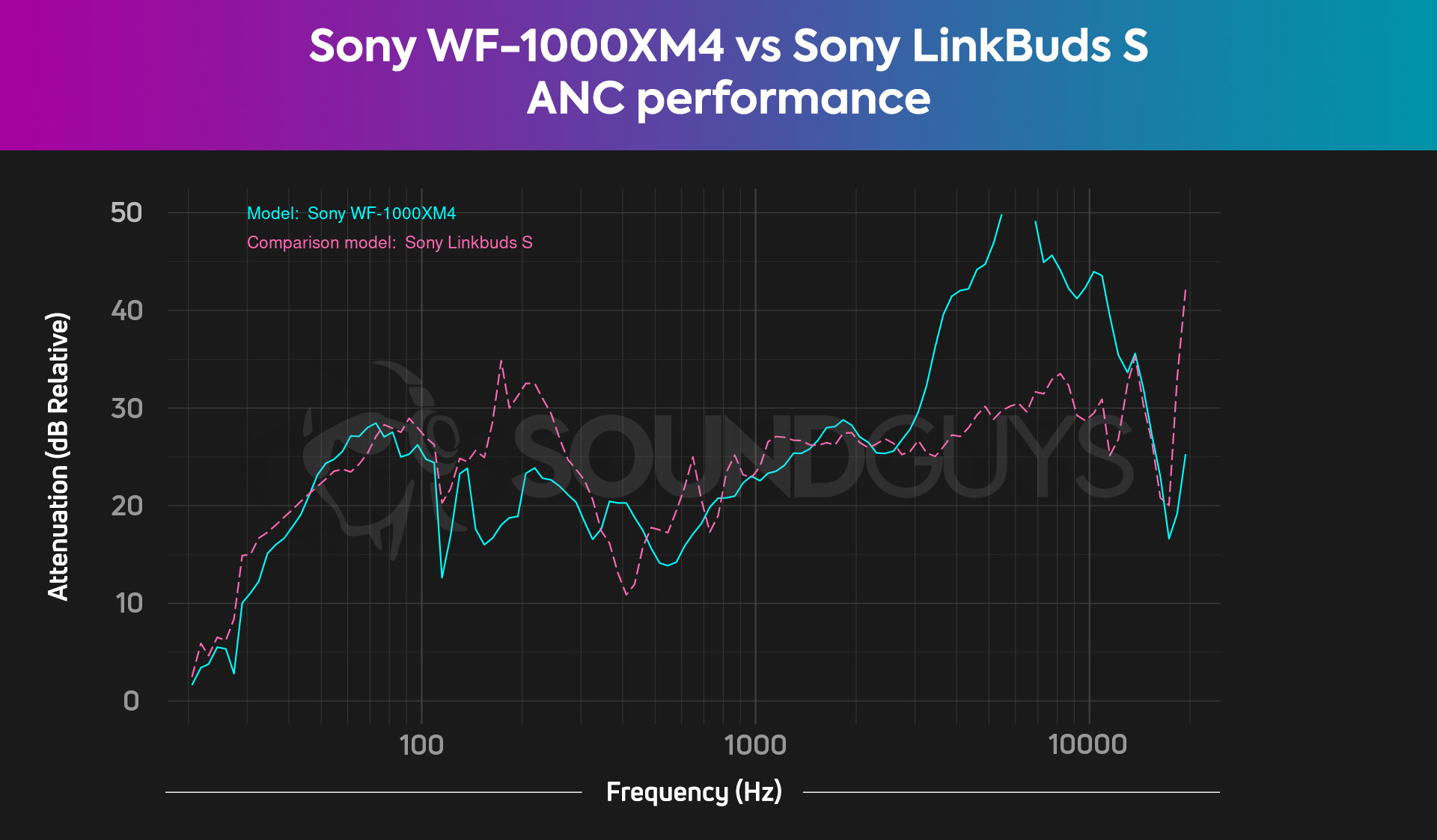
If you don’t need the absolute best attenuation, you’ll find that there’s a lot to love about the LinkBuds S. Even though the WF-1000XM4 has better overall attenuation, the LinkBuds S is no slouch and actually does more to attenuate certain low/midrange frequencies, as the chart depicts.


Is the Apple AirPods Pro (2nd generation) better than the Sony WF-1000XM4?
But what about AirPods? This is where things get a little stickier. Coming in at $30 more than the AirPods Pro (2nd generation), Apple users have a bit to ponder before pulling the trigger on a new set of earphones.
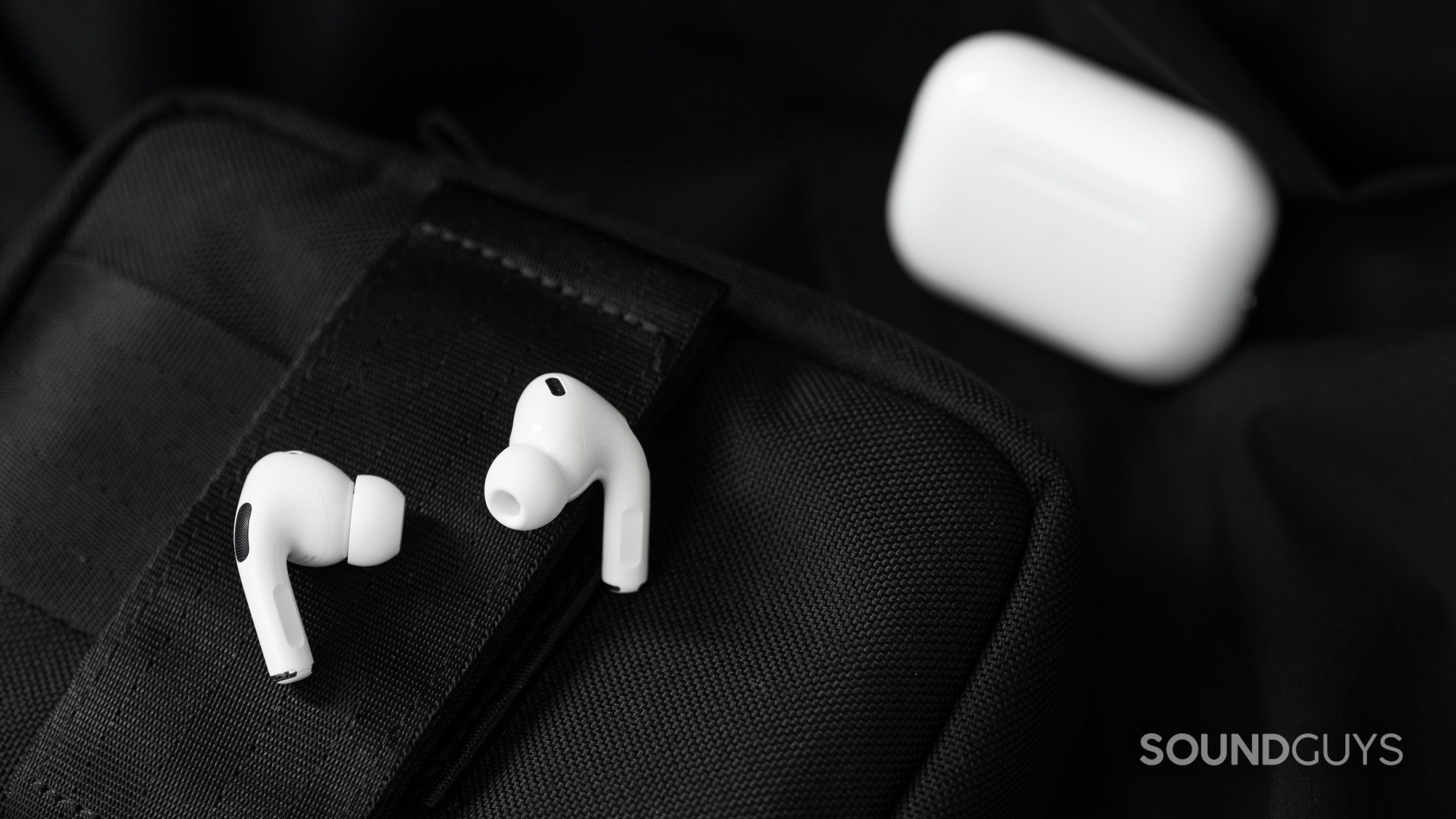
The Sony WF-1000XM4 blocks out more noise in total compared to the AirPods Pro (2nd gen), but Apple’s ANC cancels midrange frequencies more than Sony’s. Passive isolation, when you disable ANC, is assuredly better on the WF-1000XM4 than the AirPods Pro (2nd gen), though.
Thanks to the memory foam ear tips, most people will find the Sony earbuds fit more securely than the new AirPods Pro too. Both sets of buds are very comfortable, though. You get the same IPX4 rating with either pair of earphones, but only Apple’s case has an IPX4 rating too.
Loading chart ...
While the Apple AirPods Pro (2nd generation) is the best option for iPhone owners when it comes to ease of use, the Sony WF-1000XM4 is still a more versatile product. With Sony’s earbuds, you get a built-in custom EQ, the option to prioritize connection stability over sound quality, and more. Sony’s earbuds are the smarter pick for listeners who alternate between Android and iOS regularly.

What should you get instead of the Sony WF-1000XM4?
In July 2023, Sony released the successor to the WF-1000XM4: the predictably-named WF-1000XM5. As this means that the WF-1000XM4 is likely going to cross the rainbow bridge sooner or later, our recommendations are going to change considerably depending on whether or not you can find these earphones on sale or clearout.
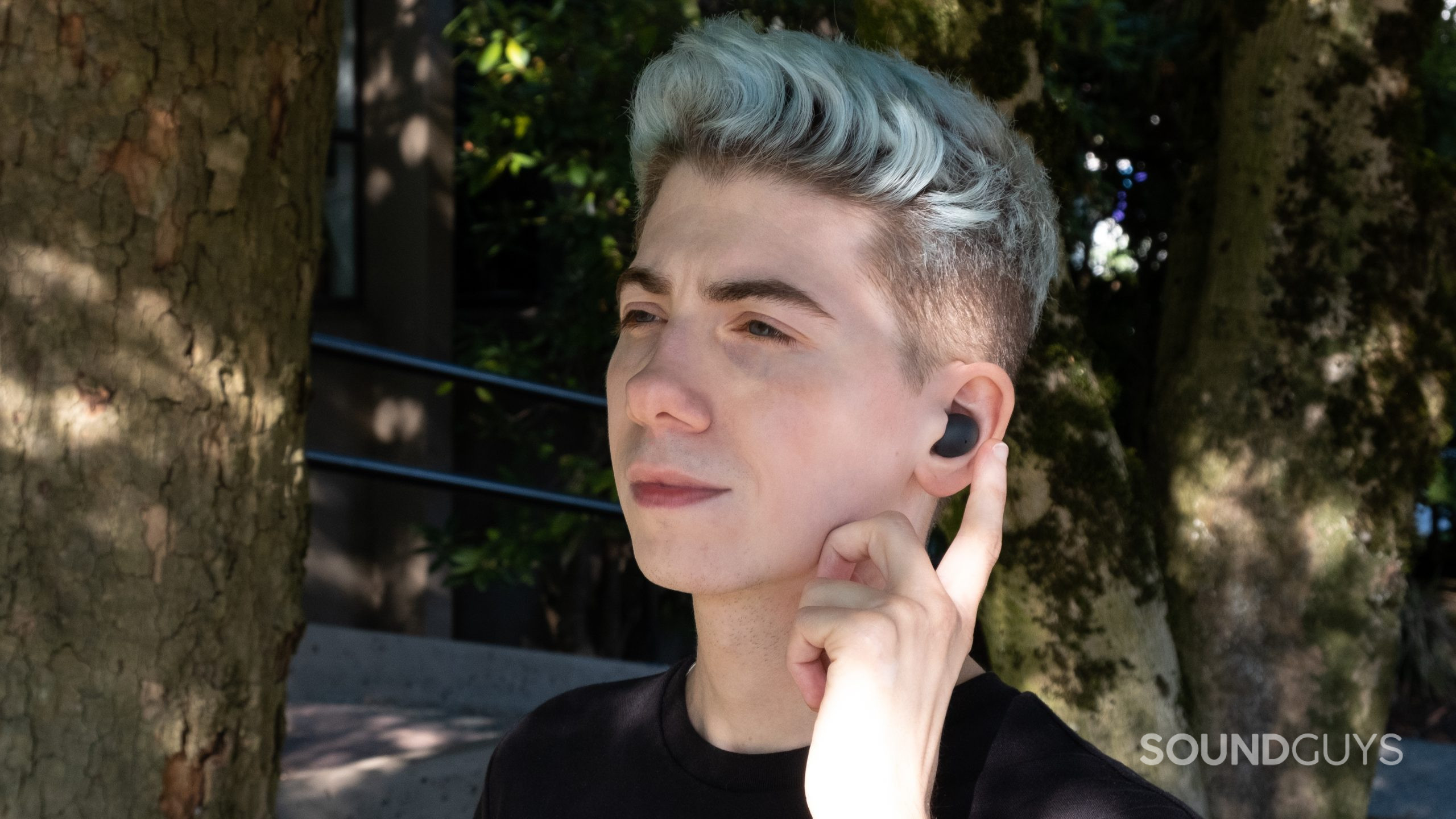
Aside from the AirPods Pro, which directly competes against the Sony WF-1000XM4, you may want to consider the Samsung Galaxy Buds 2 Pro and Galaxy Buds 2. The latter actually has slightly better ANC than the former, though it’s more affordable. Unlike the Samsung Galaxy Buds 2, the Galaxy Buds Pro has Samsung 360 Audio. If 3D sound is more important to you than ANC, you may want to get the Buds Pro over the Buds 2. The newer Samsung Galaxy Buds 2 Pro has excellent ANC, especially in the low-end. It performs even better than the Sony WF-1000XM4 in this range. If you want to read more about how the Samsung Galaxy Buds 2 Pro compares to the Sony WF-1000XM4, check out our comparison here.
The Bose QuietComfort Earbuds II makes the Sony WF-1000XM4 sweat. Both sets of buds do more to affect low and midrange frequencies, quieting them more than Sony’s, but the WF-1000XM4 has more consistent ANC performance. Plus, Sony’s ear tips do a better job of blocking out sounds above 1kHz.
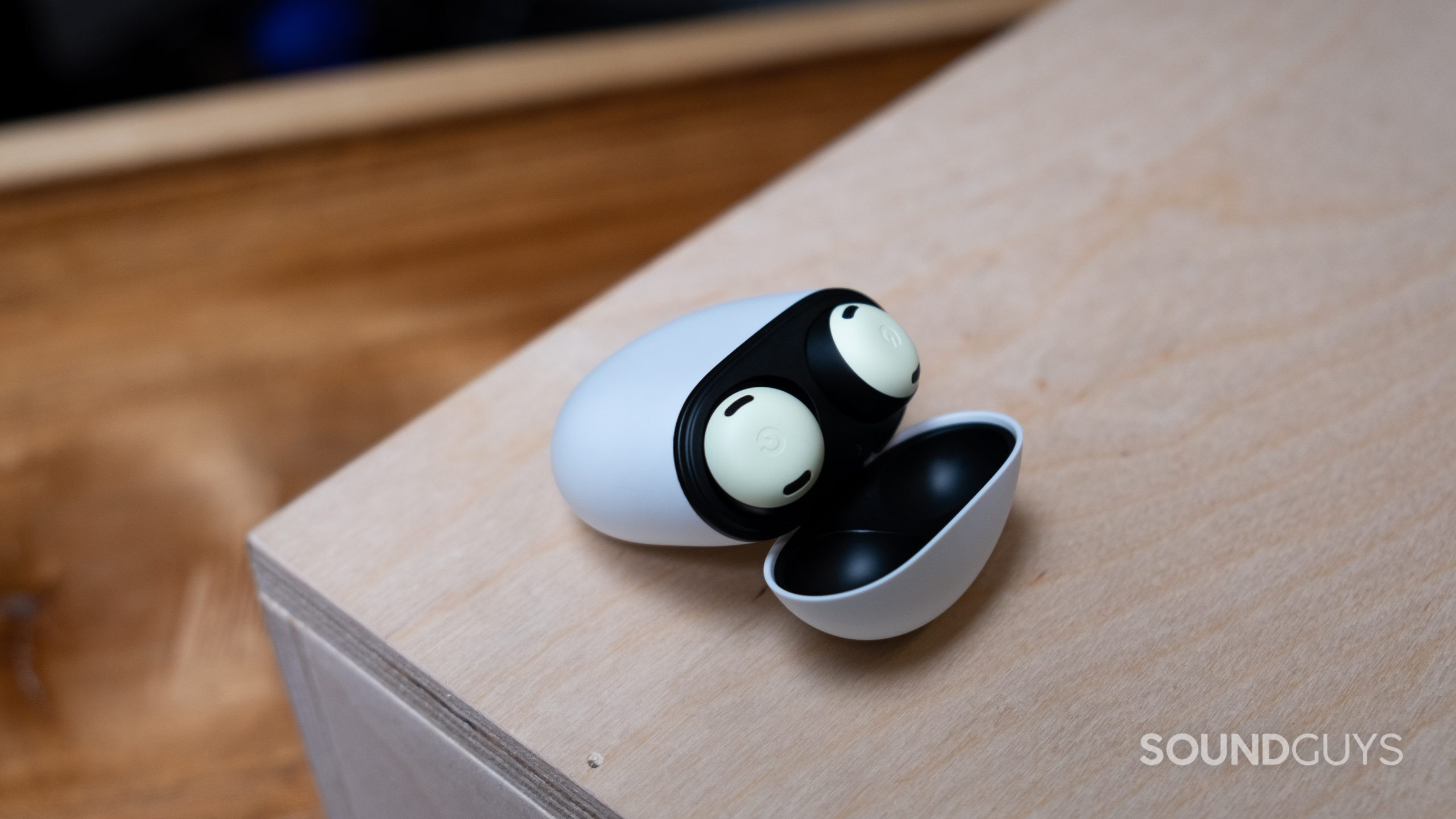
Google Pixel phone owners should get the Pixel Buds Pro. This pair of earbuds has excellent ANC and plenty of smart features baked in. When you connect it to your phone and download Google Translate, you can even experience live translation right in your ears. The main downside to the Pixel Buds Pro is its heavy bass response. Still, compared to the Sony WF-1000XM4, the Pixel Buds Pro is a great pair of noise canceling earphones.
If you want great sound quality and noise canceling for less than the top dogs, the Sennheiser CX Plus True Wireless is a great set of earphones. Like Bose and Sony, the CX Plus True Wireless app works on Android and iOS. You can also EQ the sound and receive firmware updates through the app. The earbuds have an IPX4 rating, and the case is a bit more compact than the Bose QC Earbuds.
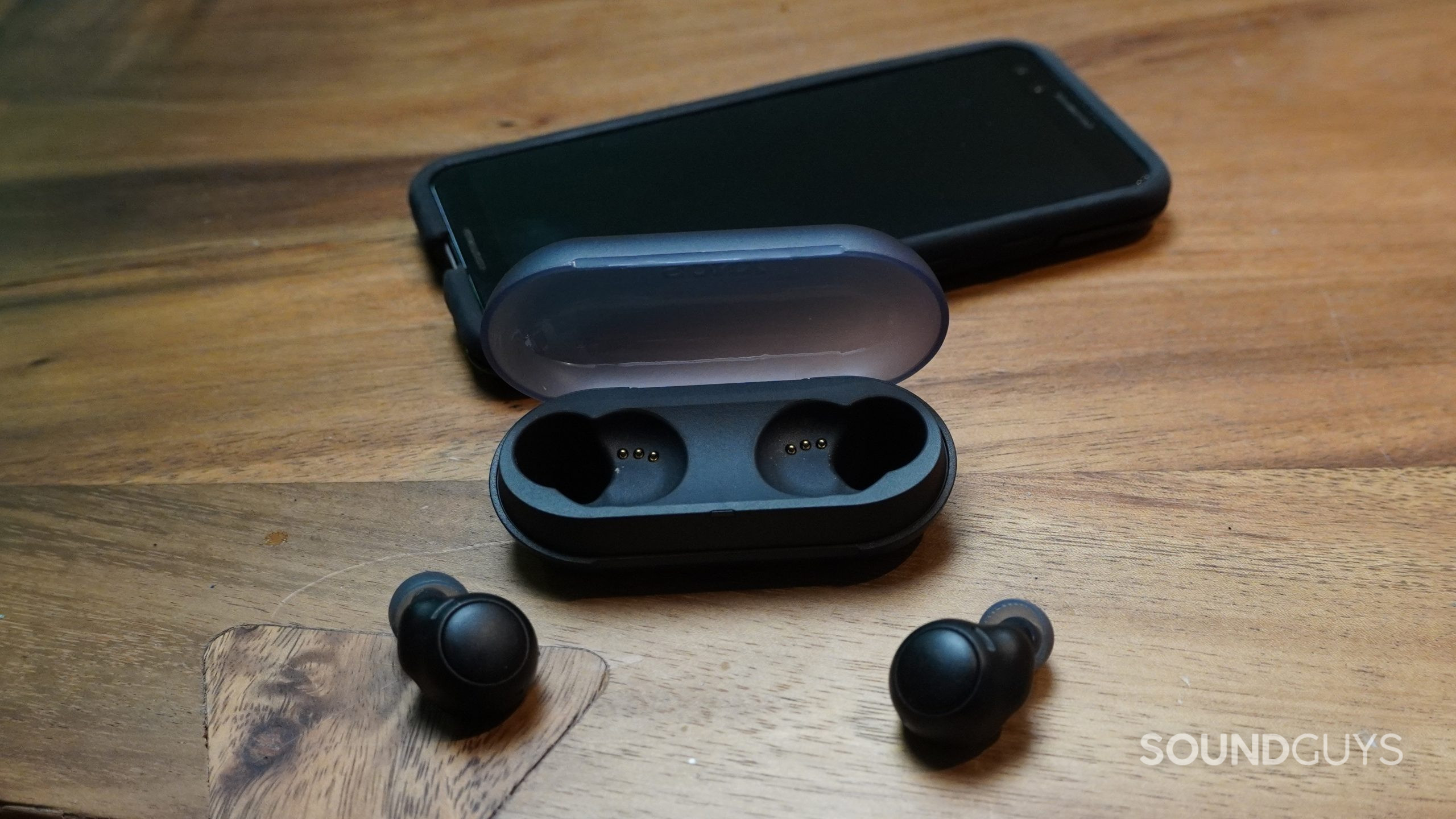
For those who realize they don’t need ANC earbuds but just want a feature-packed headset that works well and is durable enough for daily use, the Sony WF-C500 and Google Pixel Buds A-Series are solid choices. The WF-C500 isn’t a particularly special headset, but it performs well as a generalist, and you get Sony 360 Reality Audio support.
The Pixel Buds A-Series isn’t as OS-friendly as the WF-C500 because the Pixel Buds app is only available on Android. Still, you get great hardware and responsive touch controls with the A-Series. While the A-Series doesn’t have ANC, it does automatically adjust the volume based on how loud your surroundings are. We like both of these earbuds because they offer a lot for less than $100.
Frequently asked questions about the Sony WF-1000XM4
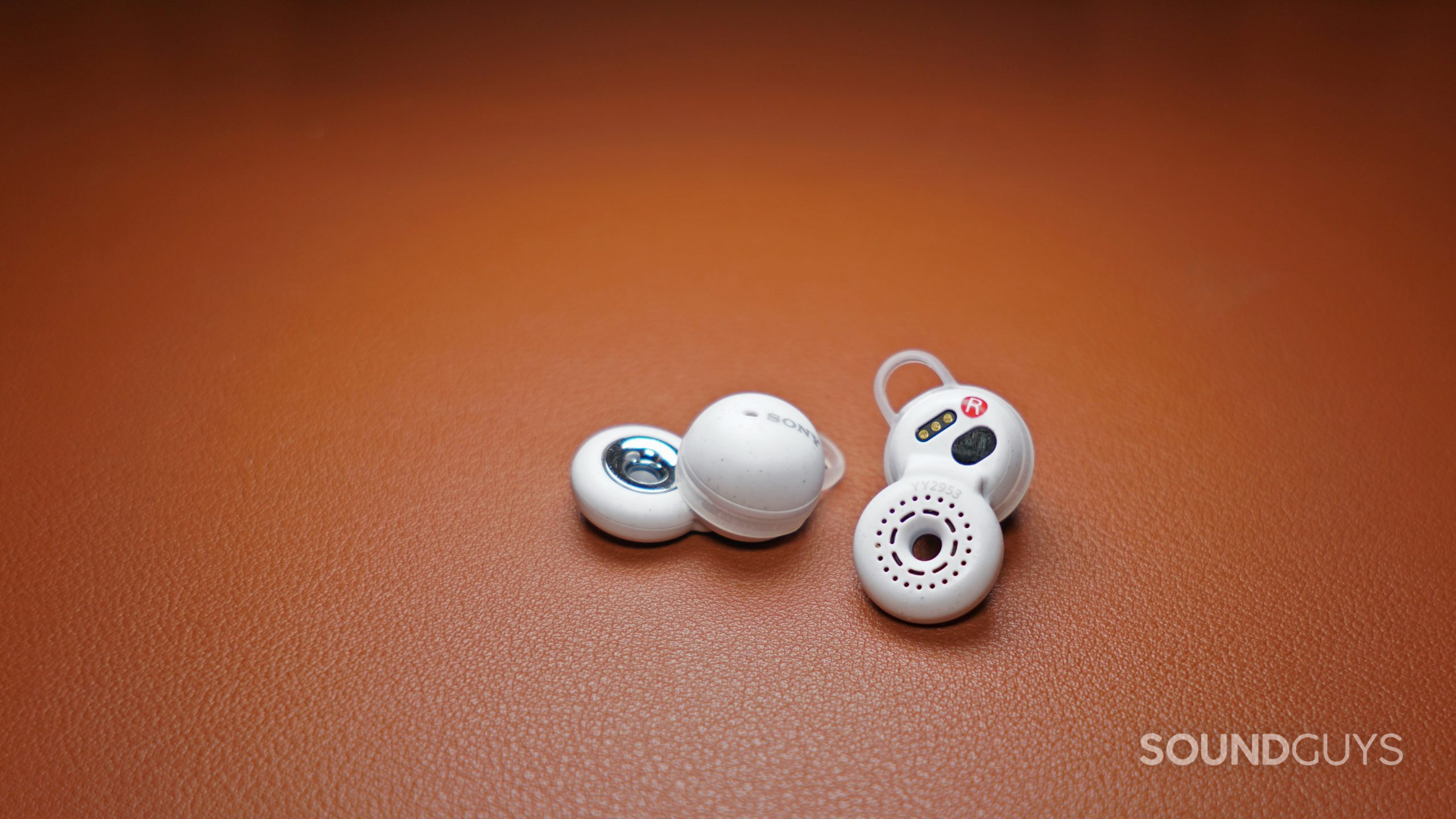
The Sony LinkBuds WF-L900 is drastically different from the WF-1000XM4 because rather than cancel noise, the LinkBuds lets external noise in. The point of the LinkBuds is to allow you to engage with your surroundings and music simultaneously, it’s a fine solution for those who are tired of using their earbuds in mono mode. The LinkBuds is the first open-type earbud to leave the ear canals completely unoccluded, whereas the AirPods (3rd generation) and Samsung Galaxy Buds Live still cover the ear canals; the buds just don’t create a seal to it. We like the LinkBuds as an unsealed option for athletes since it merits an IPX4 rating and actually stays comfortably in place thanks to the flexible ear wings.
It’s pretty pricey at $169 USD, but the price almost makes sense given just how niche this product is and how well it works relative to the other few competitors.
You’ll need to download the Sony | Headphones Connect app and assign it in the app. The factory default setting does not allow you to adjust volume with the buds. Check out this help guide from Sony.
Yes, they support independent listening. This means you can charge one while listening to the other.
Some Sony WF-1000XM4 users reported issues with one earbud would draining far faster than the other. It’s normal for true wireless earbuds to drain at slightly different rates, but if it stretches to longer than a half-hour difference, you may be suffering from this issue, too.
We didn’t run into anything close to what some people are encountering during the review period, but our reviews don’t cover a year of use.
Sony released a firmware update (1.6.1) in December 2022 to help with this, but if the issue persists, you may have to get it replaced. If the problem is fixed with this update, or you never suffered from it in the first place, carry on.